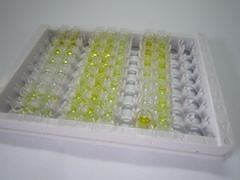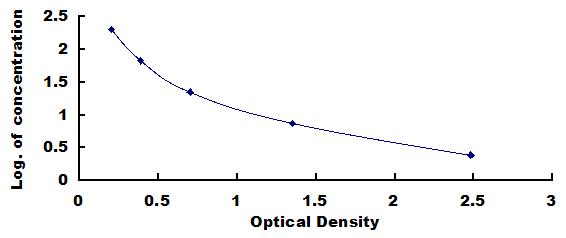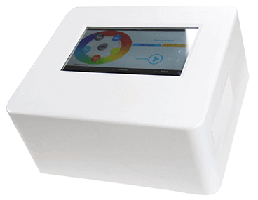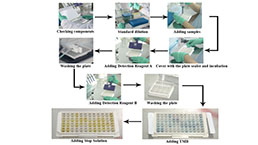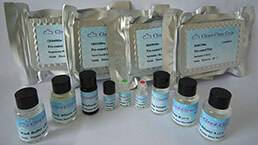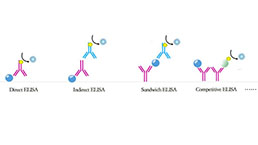Packages (Simulation)

Reagent Preparation

Image (I)
Image (II)
Certificate
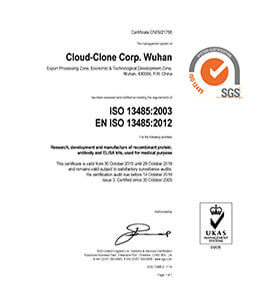
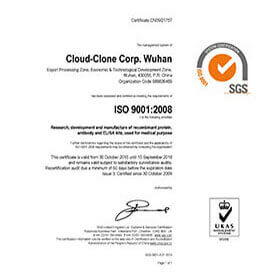
ELISA Kit for Procollagen I N-Terminal Propeptide (PINP)
P1NP; N-Propeptide Of Type I Procollagen; Procollagen I Amino Terminal Propeptide
- Product No.CEA957Hu
- Organism SpeciesHomo sapiens (Human) Same name, Different species.
- Sample Typeserum, plasma, tissue homogenates, cell lysates, cell culture supernates and other biological fluids
- Test MethodCompetitive Inhibition
- Assay Length2h
- Detection Range2.47-200ng/mL
- SensitivityThe minimum detectable dose of this kit is typically less than 0.94ng/mL.
- DownloadInstruction Manual
- UOM 48T96T 96T*5 96T*10 96T*100
- FOB
US$ 441
US$ 630
US$ 2835
US$ 5355
US$ 44100
For more details, please contact local distributors!
Specificity
This assay has high sensitivity and excellent specificity for detection of Procollagen I N-Terminal Propeptide (PINP).
No significant cross-reactivity or interference between Procollagen I N-Terminal Propeptide (PINP) and analogues was observed.
Recovery
Matrices listed below were spiked with certain level of recombinant Procollagen I N-Terminal Propeptide (PINP) and the recovery rates were calculated by comparing the measured value to the expected amount of Procollagen I N-Terminal Propeptide (PINP) in samples.
| Matrix | Recovery range (%) | Average(%) |
| serum(n=5) | 98-105 | 102 |
| EDTA plasma(n=5) | 80-103 | 98 |
| heparin plasma(n=5) | 95-102 | 99 |
Precision
Intra-assay Precision (Precision within an assay): 3 samples with low, middle and high level Procollagen I N-Terminal Propeptide (PINP) were tested 20 times on one plate, respectively.
Inter-assay Precision (Precision between assays): 3 samples with low, middle and high level Procollagen I N-Terminal Propeptide (PINP) were tested on 3 different plates, 8 replicates in each plate.
CV(%) = SD/meanX100
Intra-Assay: CV<10%
Inter-Assay: CV<12%
Linearity
The linearity of the kit was assayed by testing samples spiked with appropriate concentration of Procollagen I N-Terminal Propeptide (PINP) and their serial dilutions. The results were demonstrated by the percentage of calculated concentration to the expected.
| Sample | 1:2 | 1:4 | 1:8 | 1:16 |
| serum(n=5) | 82-95% | 79-99% | 81-92% | 98-105% |
| EDTA plasma(n=5) | 87-104% | 93-101% | 84-91% | 82-98% |
| heparin plasma(n=5) | 89-103% | 81-92% | 80-90% | 93-101% |
Stability
The stability of kit is determined by the loss rate of activity. The loss rate of this kit is less than 5% within the expiration date under appropriate storage condition.
To minimize extra influence on the performance, operation procedures and lab conditions, especially room temperature, air humidity, incubator temperature should be strictly controlled. It is also strongly suggested that the whole assay is performed by the same operator from the beginning to the end.
Reagents and materials provided
| Reagents | Quantity | Reagents | Quantity |
| Pre-coated, ready to use 96-well strip plate | 1 | Plate sealer for 96 wells | 4 |
| Standard | 2 | Standard Diluent | 1×20mL |
| Detection Reagent A | 1×120µL | Assay Diluent A | 1×12mL |
| Detection Reagent B | 1×120µL | Assay Diluent B | 1×12mL |
| TMB Substrate | 1×9mL | Stop Solution | 1×6mL |
| Wash Buffer (30 × concentrate) | 1×20mL | Instruction manual | 1 |
Assay procedure summary
1. Prepare all reagents, samples and standards;
2. Add 50µL standard or sample to each well.
And then add 50µL prepared Detection Reagent A immediately.
Shake and mix. Incubate 1 hour at 37°C;
3. Aspirate and wash 3 times;
4. Add 100µL prepared Detection Reagent B. Incubate 30 minutes at 37°C;
5. Aspirate and wash 5 times;
6. Add 90µL Substrate Solution. Incubate 10-20 minutes at 37°C;
7. Add 50µL Stop Solution. Read at 450 nm immediately.
GIVEAWAYS
INCREMENT SERVICES
| Magazine | Citations |
| Trials | Is there benefit in optimising heart failure treatment in over-80 year-old patients? (HF-80 study): study protocol for a randomized controlled trial. Trials: 1745-6215 |
| Clinical Biochemistry | Measurement of aminoterminal propeptide of type I procollagen (PINP) in serum ScienceDirect: S0009912012001543 |
| Therapeutic Apheresis and Dialysis | Low molecular weight iron dextran increases fibroblast growth factor-23 concentration, together with parathyroid hormone decrease in hemodialyzed patients PubMed: 22458393 |
| International Journal of Clinical & Experimental Pathology | IL4 and IL-17A provide a Th2/Th17-polarized inflammatory milieu in favor of TGF-β1 to induce bronchial epithelial-mesenchymal transition (EMT) PubMed: PMC3726963 |
| Osteoporosis International | PINP as a biological response marker during teriparatide treatment for osteoporosis Pubmed: 24599274 |
| Clinical Cancer Research | Zoledronic acid has differential anti-tumour activity in the pre-and post-menopausal bone microenvironment in vivo Aacrjournals: Source |
| Endocrinology | Oxytocin Reverses Ovariectomy-Induced Osteopenia and Body Fat Gain Endocrine: Source |
| general endocrinology | Oxytocin reverse ovariectomy-induced Osteoper and body fat gain Pubmed:24506069 |
| J Neurol Sci. | The effect of topiramate and lamotrigine on rat bone mass, structure and metabolism. Pubmed:24629477 |
| Bone. | Neurofibromin inactivation impairs osteocyte development in Nf1Prx1 and Nf1Col1 mouse models Pubmed:24947449 |
| Journal of Materials Science: Materials in Medicine | Phosphatidylethanolamine biomimetic coating increases mesenchymal stem cell osteoblastogenesis Pubmed:24980874 |
| Springerplus. | Effects of de-escalated bisphosphonate therapy on bone turnover biomarkers in breast cancer patients with bone metastases Pubmed:25332877 |
| Pharmacology | Effect of Mirtazapine on Rat Bone Tissue after Orchidectomy PubMed: 25871861 |
| frontiers in endocrinology | Oxytocin reverses osteoporosis in a sex-dependent manner PubMed: 26042090 |
| MERIT RESEARCH JOURNALS | Changes in Bone Metabolism Months after Laparoscopic Morbidly Obese Pre-menopausal Women Mms: Content |
| Heart Rhythm. | Prognostic value of collagen turnover biomarkers in cardiac resynchronization therapy: A subanalysis of the TRUST CRT randomized trial population Pubmed:26776557 |
| BMJ Open Sport Exerc Med | Procollagen markers in microdialysate can predict patient outcome after Achilles tendon rupture content:2 |
| Bibliothekssystem Universität Hamburg | Bilaterale Kommunikation zwischen Osteoblasten und Osteoklasten volltexte:2016 |
| Inflammation Research | Fibrosis of extracellular matrix is related to the duration of the disease but is unrelated to the dynamics of collagen metabolism in dilated cardiomyopathy pubmed:27516211 |
| Endocrine | Bone turnover response is linked to both acute and established metabolic changes in ultra-marathon runners pubmed:27422791 |
| Heart & Vessels | Left ventricular reverse remodeling is not related to biopsy-detected extracellular matrix fibrosis and serum markers of fibrosis in dilated cardiomyopathy, regardless of the definition used for LVRR pubmed:28004175 |
| journal of science and medicine in sport | The effect of calcium and vitamin D supplementation on bone health of male Jockeys. pubmed:27568072 |
| Combined aerobic and resistance training improves bone health of female cancer survivors S2352187216300389 | |
| Cellular Physiology and Biochemistry | Renal Denervation Attenuates Multi-Organ Fibrosis and Improves Vascular Remodeling in Rats with Transverse Aortic Constriction Induced Cardiomyopathy pubmed:27889753 |
| Epilepsy Research | The effect of lamotrigine and phenytoin on bone turnover and bone strength: A prospective study in Wistar rats pubmed:27838501 |
| Sci Rep. | Sprint Interval Training Induces A Sexual Dimorphism but does not Improve Peak Bone Mass in Young and Healthy Mice. pubmed:28303909 |
| Metabolism. | Low periostin levels in adult patients with Langerhans cell histiocytosis are independently associated with the disease activity. pubmed:28521873 |
| Heart and vessels | Erratum to: Effects on bone metabolism markers and arterial stiffness by switching to rivaroxaban from warfarin in patients with atrial fibrillation pubmed:28314975 |
| SCIENCE & TECHNOLOGY | A Study Protocol: Spinal Morphology, Physical Performance, Quality of Life and Biochemical Markers in Adults at Risk of Osteoporotic Fractures 59f7c85aaca272607e2d8d7a |
| Knee Surg Sports Traumatol Arthrosc | Achilles tendon rupture healing is enhanced by intermittent pneumatic compression upregulating collagen type I synthesis pubmed:28668970 |
| Method for the treatment of cardiovascular fibrosis patents:US9594083 | |
| Clinical Cases in Mineral and Bone Metabolism | Periostin and sclerostin levels in juvenile Paget's disease pubmed:29263750 |
| Journal of Clinical Research in Pediatric Endocrinology | Congenital Hypothyroidism and Bone Remodeling Cycle pubmed:27840329 |
| Biomarkers Medicial | Relationship of biomarkers of extracellular matrix with myocardial function in Type 2 diabetes mellitus pubmed:28685602 |
| Heart and Vessels | Left ventricular reverse remodeling is not related to biopsy‑detected extracellular matrix fibrosis and serum markers of fibrosis in dilated cardiomyopathy, regardless of the definition used for LVRR 10.1007/s00380-016-0930-y |
| BioMed Research International | Optimization of the Time Window of Interest in Ovariectomized Imprinting Control Region Mice for Antiosteoporosis Research pubmed:29119115 |
| Cytokine | 12-month patterns of serum markers of collagen synthesis, transforming growth factor and connective tissue growth factor are similar in new-onset and chronic dilated cardiomyopathy in patients both with and without cardiac fibrosis. pubmed:28460256 |
| Advanced Healthcare Materials | Prognostic value of fibrosis-related markers in dilated cardiomyopathy: A link between osteopontin and cardiovascular events. pubmed:29120858 |
| Bone. | The key role of proinflammatory cytokines, matrix proteins, RANKL/OPG and Wnt/β-catenin in bone healing of hip arthroplasty patients pubmed:29129760 |
| Cell Death And Differentiation | TSC1 regulates osteoclast podosome organization and bone resorption through mTORC1 and Rac1/Cdc42 Pubmed:29358671 |
| Nutrients | Specific Collagen Peptides Improve Bone Mineral Density and Bone Markers in Postmenopausal Women—A Randomized Controlled Study Pubmed:29337906 |
| Osteoporosis International | Two-year cortical and trabecular bone loss in CKD-5D: biochemical and clinical predictors Pubmed:28993865 |
| Journal of Nutrition | Cholecalciferol Supplementation Promotes Bone Turnover in Chinese Adults with Vitamin D Deficiency Pubmed:29897564 |
| European Journal of Pharmacology | The effect of levetiracetam on rat bone mineral density, bone structure and biochemical markers of bone metabolism Pubmed:29428468 |
| Journal of Clinical Densitometry | Geometric and mechanical bone response to a multidisciplinary weight loss intervention in adolescents with obesity: The ADIBOX study Pubmed:30076009 |
| Hernia | Circulating matrix metalloproteinases and procollagen propeptides in inguinal hernia Pubmed:29484522 |
| Pharmacology | Effects of Amlodipine on Bone Metabolism in Orchidectomised Spontaneously Hypertensive Rats Pubmed:29898457 |
| Nature | Coupling of bone resorption and formation by RANKL reverse signalling Pubmed: 30185903 |
| European Journal of Medical Research | Biomechanical and histological analyses of the fracture healing process after direct or prolonged reduction Pubmed: 30180907 |
| Sensors | Membrane-Based Microwave-Mediated Electrochemical Immunoassay for the In Vitro, Highly Sensitive Detection of Osteoporosis-Related Biomarkers Pubmed: 30181433 |
| Trials | Structured diet and exercise guidance in pregnancy to improve health in women and their offspring: study protocol for the Be Healthy in Pregnancy (BHIP) … Pubmed: 30567604 |
| International Journal of Cancer | Effect of induction therapy with lenalidomide, doxorubicin, and dexamethasone on bone remodeling and angiogenesis in newly diagnosed multiple myeloma Pubmed: 30650184 |
| Bone | Rapamycin improves bone mass in high-turnover osteoporosis with iron accumulation through positive effects on osteogenesis and angiogenesis Pubmed: 30610968 |
| Revista de Chimie -Bucharest- | Quantification of N-Terminal Procollagen I Propeptide in Patients With Occlusal Trauma Induced by Prosthetic Factors |
| PLOS ONE | Effect of antibiotic infused calcium sulfate/hydroxyapatite (CAS/HA) insets on implant-associated osteitis in a femur fracture model in mice Pubmed: 30870491 |
| Scientific Reports | Low fibrosis biomarker levels predict cardiac resynchronization therapy response Pubmed: 30988339 |
| Current Developments in Nutrition | Changes in Calciotropic Hormones and Bone Markers During Pregnancy in Response to a Nutrition+ Exercise Intervention in the Be Healthy in Pregnancy RCT (P11 … Pubmed: 31224444 |
| Stem Cell Research & Therapy | Low concentration flufenamic acid enhances osteogenic differentiation of mesenchymal stem cells and suppresses bone loss by inhibition of the NF-κB … Pubmed: 31324207 |
| Bone | The long noncoding RNA Crnde regulates osteoblast proliferation through the Wnt/β-catenin signaling pathway in mice Pubmed: 31622775 |
| International Journal of Basic and Clinical Endocrinology | Expression of prolactin receptors in the duodenum, kidneys and skeletal system during physiological and sulpiride-induced hyperprolactinaemia Pubmed: 30143940 |
| Bone | Mice lacking plastin-3 display a specific defect of cortical bone acquisition Pubmed: 31678489 |
| International journal of molecular sciences | Differences in Osteoimmunological Biomarkers Predictive of Psoriatic Arthritis among a Large Italian Cohort of Psoriatic Patients Pubmed: 31717649 |
| Journal of Bone and Mineral Research | BMP9 reduces bone loss in ovariectomized mice by dual regulation of bone remodeling Pubmed: 31914211 |
| ESC Heart Failure | Outcome in German and South African peripartum cardiomyopathy cohorts associates with medical therapy and fibrosis markers Pubmed: 32064780 |
| International Journal of Medical Sciences | Hypoalbuminemia differently affects the serum bone turnover markers in hemodialysis patients Pubmed: 31839746 |
| JOURNAL OF BONE AND MINERAL RESEARCH | Piezo1 Inactivation in Chondrocytes Impairs Trabecular Bone Formation Pubmed: 33180356 |
| JOURNAL OF THROMBOSIS AND THROMBOLYSIS | Extracellular matrix collagen biomarkers levels in patients with chronic thromboembolic pulmonary hypertension Pubmed: 33175289 |
| INTERNATIONAL JOURNAL OF BIOLOGICAL MACROMOLECULES | Development of a novel polysaccharide-based iron oxide nanoparticle to prevent iron accumulation-related osteoporosis by scavenging reactive oxygen … Pubmed: 33049237 |
| journal of bone and mineral research | Mice carrying a ubiquitous R235W mutation of Wnt1 display a bone‐specific phenotype Pubmed: 32369212 |
| Endokrynologia Polska | FGF23 and primary hyperparathyroidism: is there a link? Pubmed: 32598019 |
| Journal of Orthopaedic Translation | Qu Feng Zhi Tong capsule increases mechanical properties of cortical bone in ovariectomized rats |
| Research square | 4-Hexylresorcinol Inhibits Osteoclastogenesis by Suppressing NF‐κB Signaling Pathway and Reverses Bone Loss in Ovariectomized Mice |
| 淫羊藿水提物及提取药渣的抗骨质疏松药效比较研究 | |
| Pamukkale Tıp Dergisi | Postmenapozal Tip-2 diyabetes mellitus' lu hastalarda osteoporoza bağlı kırık riskinin ve kemik Turnoveri'nin değerlendirilmesi |
| International Journal of Pharmaceutical and Clinical Research | Bone Turnover Markers in Osteogenesis Imperfecta and Effect of Bisphosphonate Treatment: First Egyptian Study |
| Science Advances | A biomimetically hierarchical polyetherketoneketone scaffold for osteoporotic bone repair 33310848 |
| Rheumatology | Proinflammatory and bone protective role of calcitonin gene-related peptide alpha in collagen antibody-induced arthritis 33221885 |
| Nutrients | Low Energy Availability with and without a High-Protein Diet Suppresses Bone Formation and Increases Bone Resorption in Men: A Randomized Controlled Pilot ¡ 33671093 |
| J Bone Miner Res | Lgr4 promotes aerobic glycolysis and differentiation in osteoblasts via the canonical Wnt/¦Â©\catenin pathway 33950533 |
| Phytomedicine | Randomized, double-blind, placebo-controlled trial to examine the safety, pharmacokinetics and effects of Epimedium prenylflavonoids, on bone specific alkaline … 34352588 |
| Nutrients | The Effect of Daily Methylsulfonylmethane (MSM) Consumption on High-Density Lipoprotein Cholesterol in Healthy Overweight and Obese Adults: A Randomized … 34684621 |
| PLoS One | Osteoblast-specific inactivation of p53 results in locally increased bone formation 34793446 |
| Bone Res | The WNT1G177C mutation specifically affects skeletal integrity in a mouse model of osteogenesis imperfecta type XV 34759273 |
| Nutrients | The Effect of Caloric Restriction with and without n-3 PUFA Supplementation on Bone Turnover Markers in Blood of Subjects with Abdominal Obesity: A Randomized … 34578973 |
| Chronobiol Int | Night shift work and osteoporosis-bone turnover markers among female blue-collar workers in Poland Pubmed:35139709 |
| Cancers (Basel) | Spine Metastases in Immunocompromised Mice after Intracardiac Injection of MDA-MB-231-SCP2 Breast Cancer Cells Pubmed:35158823 |
| Cell Death Discov | BMP9 reduces age-related bone loss in mice by inhibiting osteoblast senescence through Smad1-Stat1-P21 axis Pubmed:35523787 |
| Experimental and Molecular Medicine | Foxf2 represses bone formation via Wnt2b/β-catenin signaling Pubmed:35668101 |
| Bioactive Materials | Osteoporotic bone recovery by a bamboo-structured bioceramic with controlled release of hydroxyapatite nanoparticles Pubmed:35386445 |
| Journal of Orthopaedic Translation | Puerarin specifically disrupts osteoclast activation via blocking integrin-β3 Pyk2/Src/Cbl signaling pathway Pubmed:35228997 |
| Bioactive Materials | Construction of a magnesium hydroxide/graphene oxide/hydroxyapatite composite coating on Mg–Ca–Zn–Ag alloy to inhibit bacterial infection and promote … Pubmed:35585377 |
| Journal of Orthopaedic Translation | Exercised accelerated the production of muscle-derived kynurenic acid in skeletal muscle and alleviated the postmenopausal osteoporosis through the Gpr35 … |

